If you are using carbon steel for gauntlets then you will want to heat treat your plates before assembling them. While I had originally included this in an article on finger assembly, the length of both articles has led me to publish this as a separate article, which will be referenced from that post. It is important to make sure that the plates are completely formed before you heat treat them, because once these are heat treated they will be very difficult (or impossible) to reshape. I once forgot to countersink my rivet holes before heat treating, and destroyed a number of titanium coated drill bits rectifying this oversight. Heat treating the finger plates has 3 main parts, each of which are illustrated below.
- Heat treat and quench
- Tempering
- Clean-up and polishing
Heat treat and quench
This basically means getting the plates up to temperature and then dunking them into an appropriate medium to quickly drop the temperature. You can heat above the critical temperature and then allow the steel to air cool, which will give a reasonable amount of strengthening, or you can quench and temper, which will allow your material propertie to be much more consistent – please check the specific materials properties for heat treatment: while 4130 and 105 are very similar, some materials, particularly including precipitation hardening alloys (like 17/7 PH stainless) need to be held at a specific temperature for a prolonged period – Craig Nadler has a good overview specific to armour here: https://nadler.us/armour/hardening.html
I am using a temperature controlled forge (kiln) which we bring up to 1,600F (about 875C) which is a bright orange colour. This is hot enough to allow tie to get to a quench tank without dropping below the critical temperature range, but cool enough that plates do not deform. We use transmission fluid as a quenching oil. The pictures below show placement of the plates in the kiln (on a ring, alternating direction so that the plates stay spaced for the quench), heating to firing temperature and removing the plates.
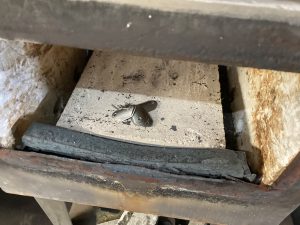
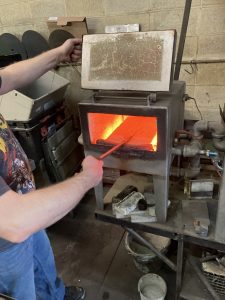
Once the plates are at temperature they are quenched in oil (transmission fluid). You can see that the oil “flares” due to the temperature, and we have found that if the oil is warm the plates will often not quench properly (heated oil is needed to correctly quench 1095 steel, used for knives, the regular product of this shop). The final picture shows what the plates look like once they are quenched and cleaned. At this point we test a file on one of the plates – the file should not “bite” and will “skip” or “skate” off the plate. If it is possible to file then the temperature was too low when the plates were quenched. we have never had a problem with hardening when the plates were quenched when they were hot enough to “flare” and the oil was at room temperature. ONce we know the plates have been hardened several plates are polished to bare steel so that tempering can be appropriately judged in the next step.
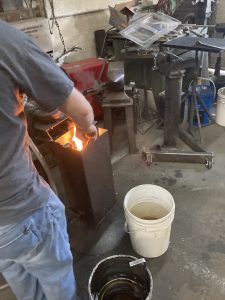

We then temper the plates by holding them at 500F for 30 minutes. This is long enough for the polished plates to turn the distinct “purple” colour that you can see in the upper left and middle plate on the right. If you don’t have access to an oven that will get to this temperature you can temper at a lower temperature for a longer period – our first temper was at 400F for 90 minutes and it has held up well.
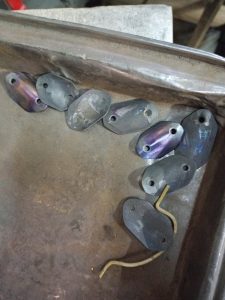
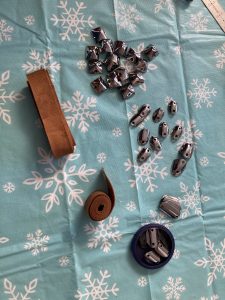
Clean up and Polishing
I won’t go into mass amounts of detail here, since I talk about polishing in other places. For “thin” materials (generally 20 gauge / 0.040″ / under 1 mm) and lighter I will use 320 or 40 grit abrasives to clean the fire scale, and then move to 600 grit for a fine sand before polishing. For polish I use white Tripoli on a muslin buff. I have purchased a few “scotch-brite” pads to see if these are better at cleaning firescale, so I may have an update if this is a better methodology!